At some point in your life, you’ve probably found yourself stopping on King’s Square to gawk at a street performer. While you watch fire eaters, or giggle at the crude innuendo from that guy who stands on his “big balls”, only a century previously our ancestors were gathered on the same spot to listen to holy sermons about sin. That is because King’s Square was previously home to a church; Christ Church.
The square today is an open space perfect for public performances and chucking pastry crumbs at pigeons. However, in the past the place was dominated by the church, making the likes of Colliergate and the street leading to The Shambles narrow alleyways. The raised platform, which today still exists and serves as a very convenient stage, was part of the church’s graveyard, with some headstones now incorporated into the ground.
Significant beginnings
Christ Church, or Holy Trinity as it was also known, was first mentioned in 1268 but it is highly likely that the original building was much older than that… perhaps even 1000 years older. Well, kinda. You see, King’s Square got its name from actual kings. The square marks the spot where the Roman Porta Sinistra (left-hand gateway) stood, which would have been a pretty major stone building. This building survived the Roman withdrawal from Britain, and was used by subsequent rulers, namely the Saxon, and later Viking, kings of York. The theory is that the Roman gateway, repurposed partly as a palace, would have had a chapel, and it was this place of worship that, rebuilt a few times as the Roman wall and structures were demolished, eventually became Christ Church.
And so it remained, as an important place of worship for the locals, many of which would have possibly lived and worked in The Shambles, for centuries. It wasn’t until 1768 that the city planners started to realise that the church was impeding access in the area, so part of the church’s vestibule and vestry were removed to increase the width of Colliergate. However, that meant that the entrance to the church from that side opened directly onto the street, causing a few fatalities. William Hargrove, in his 1818 guide to the city, wrote:
“The confined entrance to St. Andrewgate, on account of the projection of this church, has often been the cause of misfortunes, which the feeling mind cannot but contemplate with horror. In short, the turn is so sudden from the narrowness of this part of the street, that several lives, at different times, have been sacrificed to the existing evil.”
Diminishing
Clearly someone took note, as by 1829 the church had been reduced yet again, allowing Colliergate to widen once more, and giving the medieval church a strange triangular layout. Christ Church was also becoming less popular at this point, as the many reductions had caused the floor to become uneven and the space unsuitable for worship. Sotheran’s Guide of 1852 was no fan of the ancient building, saying that “if it was altogether removed there would be no loss of architectural beauty, and a great increase to public convenience.” Damn.
And so, enter the Victorians; a strange bunch of people who it seems, at times, had far more money than sense. In a curious decision, driven possibly more by nostalgia than common sense and thought for the future, they demolished the medieval church and immediately rebuilt it on the same footprint. It was still a cramped, oddly shaped church, but it was at least refreshed and reopened by 1861. That was, however, a total waste of time and money, because…
The neighbours won
In 1886, just 25 years later, the parish of Christ Church was united with the larger parish of St Sampsons, rendering the church defunct. Without a regular congregation utilising it, and with even greater demands on the neighbouring roads, especially from these newfangled horseless carriages, the church’s fate was sealed. By the turn of the 20th century the only regular visitors were the flock of sheep who were housed there, and in 1937 the building was finally fully demolished.
Fortunately the cleared space was left for public use, creating the pleasant Kings Square that we know today. A large inscribed stone tells passers-by about about the existence of the church, but far more interesting are the surviving headstones that can still be made-out on the raised paved platform. The next time you stop to watch a juggler, or drool through the cafe window of York’s Chocolate Story, give ’em a read and consider how different this part of the city once looked.

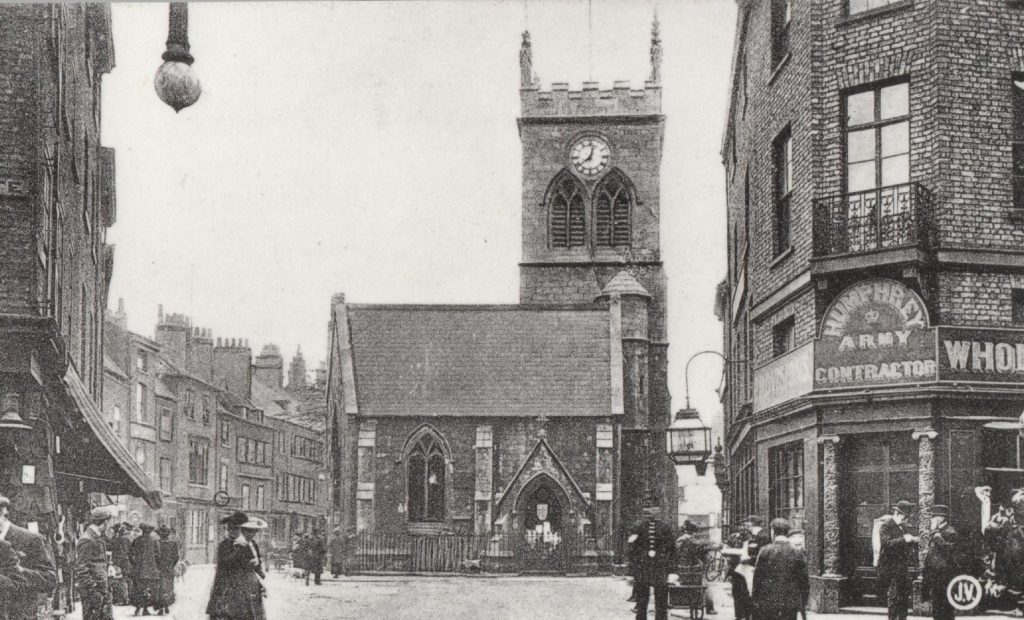
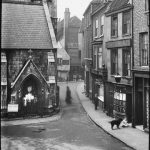
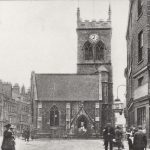
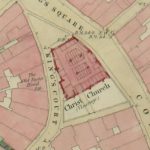
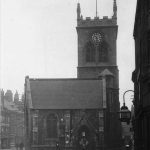
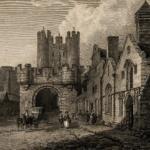



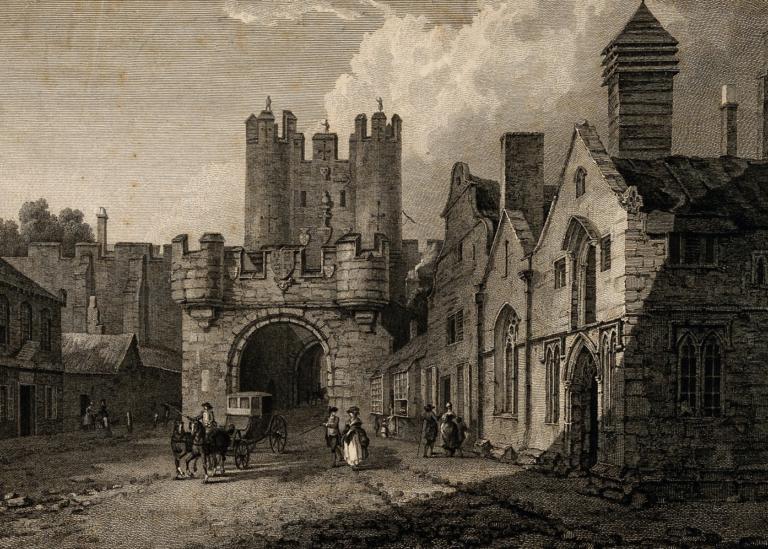




Add a comment